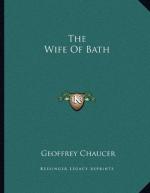|
This section contains 9,602 words (approx. 33 pages at 300 words per page) |

|
SOURCE: Blamires, Alcuin. “The Wife of Bath and Lollardy.” Medium Aevum 58, no. 2 (1989): 224-42.
In the following essay, Blamires probes the similar themes in the anti-authority tirade in The Wife of Bath's Prologue and Lollardy, a religious movement that was often seen as anti-church and heretical.
I
‘Re-readings’ of Chaucer conducted according to radical socio-historical principles will characteristically maintain that The Canterbury Tales represents (as Stephen Knight puts it) ‘a continuing and tense engagement with its period’, and that individual tales are ‘potent realizers’ of conflicts within late fourteenth-century society.1 However, in view of Chaucer's ostensible reluctance to offer direct comment on such upheavals as the Peasants' Revolt, interpretations offered by critics of that persuasion frequently strain credulity: they betray a programmatic urge to recruit both local detail and larger narrative as witnesses to an ideological preoccupation ascribed a priori to the poet.
Knight's own contention (drawing on an...
|
This section contains 9,602 words (approx. 33 pages at 300 words per page) |

|


